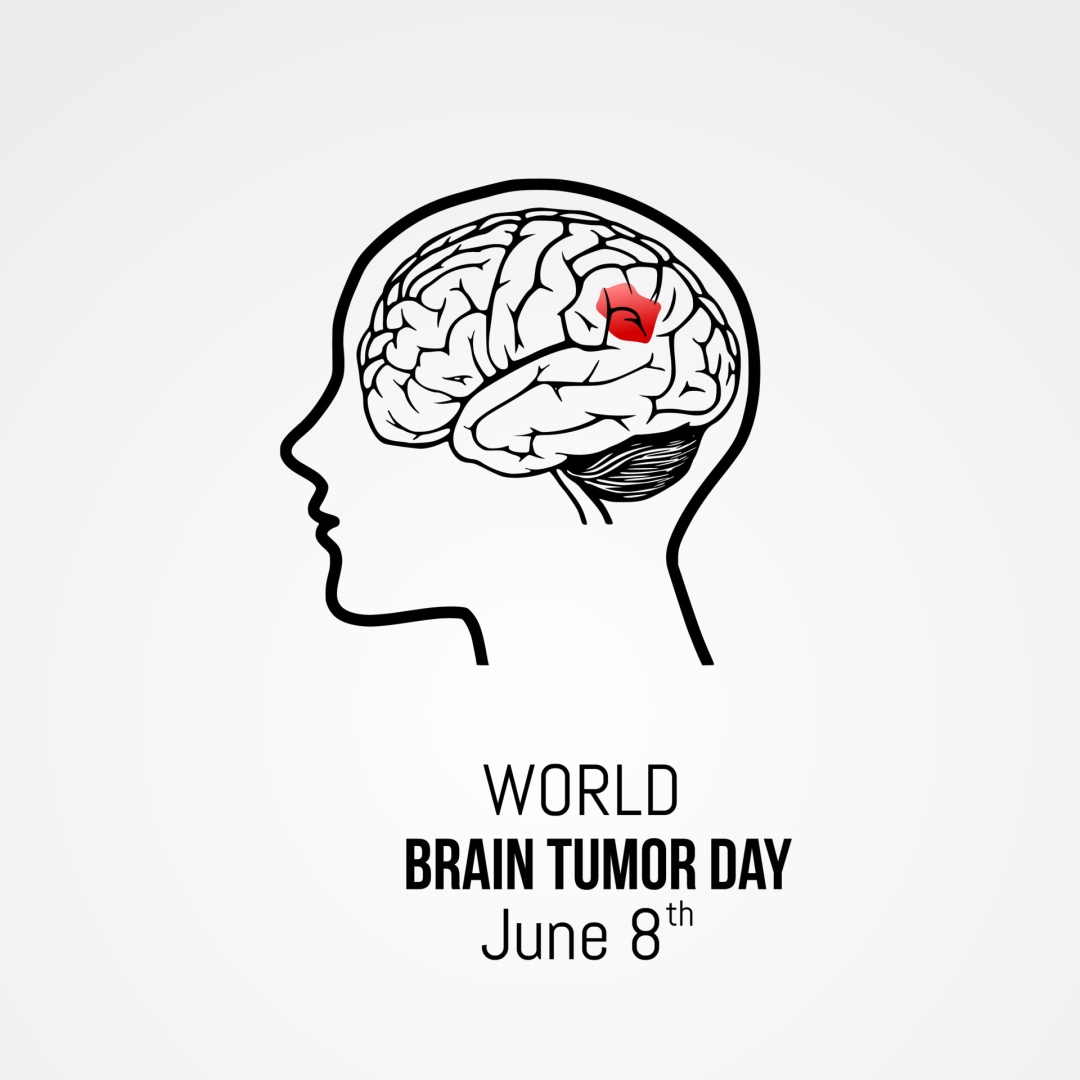According to the National statistics, the incidence of brain tumours is approximately 5-10 per 100,000 people. 40% of all types of cancers spread to brain. In adults, brain tumours were in the top 10 types of tumours and are the second most common cancers in children

Since 2000, the 8th of June has been designated as World Brain Tumour Day. A brain tumour. Do these two words make you feel scared or terrified, or do they send shivers down your spine? This is most likely why this day should be observed: as a day of awareness, education, and, most importantly, commemoration.
I've been a part of the lives of many patients (and their families) who have been diagnosed with and treated for brain tumours for more than a decade. I witnessed their first incredulity, obvious fear of approaching doom, stubborn spirit, unwavering fight, and many times, wins. Even with today's technical advances in medicine and elsewhere, there is still a sense of impending doom whenever a patient is diagnosed with a brain tumour. This is despite the fact that approximately 70% of brain tumours are non-cancerous.
Take, for example, meningioma. The most frequent primary benign intracranial tumour is a meningioma. Meningioma develops from one of the three membranes that surround our brain and spine. Thus, meningioma does not originate in the brain. Because most of them grow at a glacial pace, symptoms appear only after they reach a specific size. It can compress or pressure the nearby brain, nerves, or blood arteries as it grows.
They are sometimes found when we scan the brain or spine for another reason. Many meningiomas do not necessitate immediate treatment and are instead watched. Furthermore, because these cancers develop inwards from the outside, they are often amenable to total resection without producing deficiency.
Brain tumours can thus be benign or malignant. They can also be either primary or secondary (metastatic). The World Health Organisation classifies these lesions into more than 100 categories and sub-types.
The following are the most common symptoms of a brain tumour:
• Headache
• Seizures
• Progressive weakness or paralysis on one side of the body
• Vision, speech, hearing, or swallowing issues
• Mental or behaviour shifts
• Severe nausea, vomiting, or sleepiness.
Depending on the location and type of tumour, these symptoms may appear alone or in groups. We all had headaches at some point in our lives. The headache caused by a tumour feels different, occurs more frequently in the morning, is linked with vomiting or nausea, and worsens over time. Seizures can be generalised, affecting all of your limbs and causing uprolling of the eyeballs and frothing at the mouth, or they can affect a specific portion of your body. When these symptoms appear, it is best to consult a neurospecialist.
People of all ages, including children, can be affected by brain tumours. Symptoms, tumour forms, and treatment options may differ. Age, radiation exposure, and, in rare cases, family history may all enhance your chances of developing a cancerous brain tumour. A CT or MRI scan is the principal mode of investigation. Occasionally, more testing would be required.
Your doctor may recommend extra testing at times. The therapy of any brain cancer would be determined by the type of tumour, its location, size and extent, as well as your overall health.
Initially, drugs are used to temporarily alleviate symptoms. These may include pain relievers, nausea and vomiting medications, anti-seizure medications, and medication to reduce swelling around the tumour. Brain tumours are frequently removed surgically. The surgery's goal would be to remove as much of the aberrant tumour as feasible. If this is not achieved, radiation or chemotherapy may be required. Newer treatment options, such as biopsy through a small hole in the skull and focused radiotherapy to only the tumour area, are now available.
As previously stated, medicine, like other sciences, is progressing. We now have newer medications and chemo treatments accessible for brain cancers as well. Better diagnostic tools are available to assist us in achieving safe and maximum tumour excision. We have made breakthroughs in surgical instruments and microscopes.
It is critical to promote awareness and educate everyone about brain tumours in order to dispel myths and misconceptions. We must recognise that a brain tumour diagnosis does not always imply a dismal prognosis. In most situations, pre- and post-surgery and therapy, as well as rehabilitation from friends and family, are essential for the patient's best prognosis.
(The author is Consultant Neuro Surgeon, Manipal Hospitals, Goa)